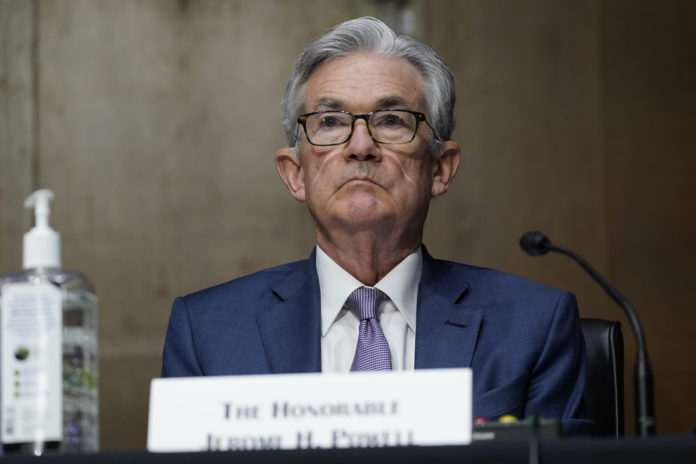
WASHINGTON (AP) — The Federal Reserve signaled Wednesday that it may act sooner than previously planned to start dialing back the low-interest rate policies that have helped fuel a swift rebound from the pandemic recession but have also coincided with rising inflation.
Join our WhatsApp groupSubscribe to our Daily Roundup Email
The Fed’s policymakers forecast that they would raise their benchmark short-term rate, which influences many consumer and business loans, twice by late 2023. They had previously estimated that no rate hike would occur before 2024.
In a statement after its latest policy meeting, the Fed also said it expects the pandemic to have a diminishing effect on the economy as vaccinations increase, thereby allowing for more growth.
“Progress on vaccinations has reduced the spread of COVID-19 in the United States. Amid this progress and strong policy support, indicators of economic activity and employment have strengthened,” the Fed said in a statement.
The central bank also boosted its forecast for inflation to 3.4% by the end of this year, from 2.4% in its previous projection in March. Yet the officials foresee price increases remaining tame in the following two years. That outlook reflects Chair Jerome Powell’s view that the current inflation spikes stem mainly from supply shortages and other temporary effects of the economy’s swift reopening from the pandemic.
In addition to having pegged its key rate near zero since March of last year, the Fed has been buying $120 billion a month in Treasury and mortgage bonds to try to hold down longer-term rates to encourage borrowing and spending.
The Fed officials are widely believed to have begun discussing a reduction in those monthly bond purchases at the policy meeting that ended Wednesday — a first step in pulling back on its efforts to stimulate the economy.
There was no mention of paring those bond purchases in the written statement the Fed issued after the meeting. But the topic is sure to come up at Powell’s news conference later Wednesday.

The central bank also boosted its forecast for inflation to 3.4%.
Here is what we do know. Lumber prices 500% higher
Gas Prices : 25% higher
Housing pirces 25-50% higher
Car prices : 25-50% higher
Rent: 25% higher
Key Services such as Uber: 25% higher
The so called “core inlflation” is fake numbers. Too many exclusions. Since Biden took office the stock market has not outperformed real inlfation